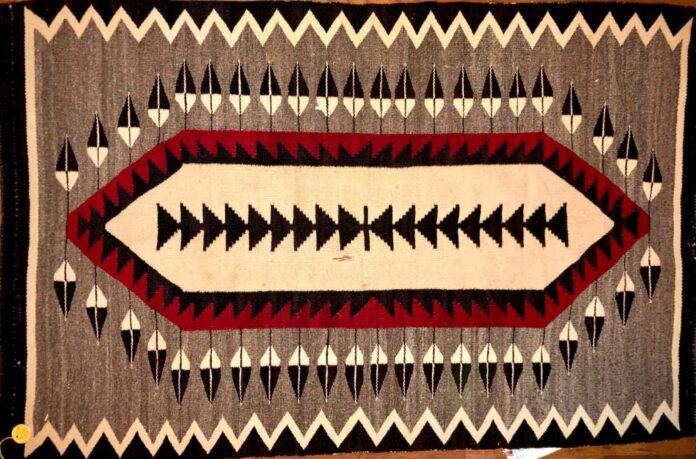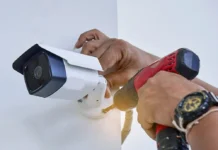Navajo rugs are not just beautiful pieces of art; they are a testament to the rich cultural heritage of the Navajo people, as well as a symbol of their resilience and ingenuity. These handwoven masterpieces have a deep significance and are highly sought after by collectors and enthusiasts around the world. In this comprehensive guide, we will explore the history and significance of Navajo rugs, where to find authentic Navajo rugs for sale, essential factors to consider when purchasing one, and how to care for and preserve your Navajo rug collection.
History and Significance of Navajo Rugs
The Rich Cultural Heritage of Navajo Rugs
Navajo rugs have a long and storied history that dates back centuries. The Navajo people, who are native to the American Southwest, have been weaving rugs for generations. Their weaving skills have been passed down through the ages, with each generation adding their own unique techniques and designs to the craft.
Traditionally, Navajo rugs were woven for utilitarian purposes, such as floor coverings, saddle blankets, and clothing. However, over time, the artistic quality of Navajo rugs began to emerge, and they became highly prized for their intricate designs and vibrant colors.
Today, Navajo rugs are not just beautiful works of art; they are an important part of Navajo culture and identity. They serve as a means of preserving and showcasing the Navajo people’s rich cultural heritage.
Symbolism and Meaning in Navajo Rug Designs
Navajo rug designs are rich in symbolism and meaning, often reflecting the natural world and elements of Navajo mythology and spirituality. Each design tells a story and holds deep significance for the weaver.
For example, the Navajo “Eye Dazzler” design represents the spiritual connection between the weaver and the natural world. The mesmerizing patterns and bold colors are thought to symbolize the cyclical nature of life and the interconnectedness of all things.
Other common Navajo rug designs include the “Double Storm Pattern,” which represents the Navajo belief in the power and importance of rain, and the “Yei-Bi-Chei,” which depicts the ceremonial dancers who play a vital role in Navajo religious ceremonies.
The Evolution of Navajo Rug Weaving Techniques
Navajo rug weaving techniques have evolved over time, with each period marked by distinctive features and styles. Traditional Navajo rugs were woven using a vertical loom, with the weaver sitting on the ground and using their hands and fingers to create the intricate designs.
In the late 19th century, the introduction of the horizontal loom revolutionized Navajo rug weaving. This new technique allowed for larger, more complex designs and increased production efficiency.
Today, Navajo rug weavers use a combination of traditional and modern techniques. While some weavers still use traditional hand-spun wool and natural dyes, others incorporate commercial yarns and synthetic dyes to achieve a wider range of colors and textures.
Where to Buy Authentic Navajo Rugs
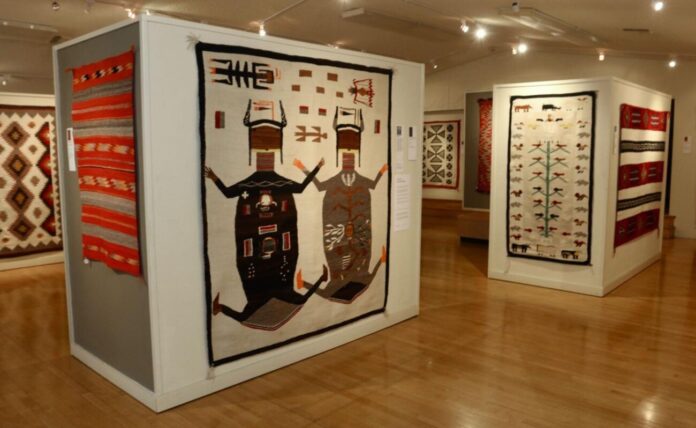
Uncovering Hidden Gems: Exploring Navajo Rug Trading Posts
One of the best places to find authentic Navajo rugs is at Navajo rug trading posts. These establishments have been a central hub for Navajo rug sales for many years and offer a wide selection of rugs, both antique and contemporary.
When visiting a Navajo rug trading post, you’ll have the opportunity to meet the weavers and learn about the history and cultural significance of the rugs firsthand. You can also find unique pieces that may not be available elsewhere.
Online Marketplaces: Finding Reputable Sellers of Navajo Rugs
Online marketplaces have made it easier than ever to find and purchase authentic Navajo rugs. However, it’s important to be cautious and do your research to ensure you’re buying from reputable sellers.
Look for sellers who provide detailed information about the rugs, such as their origin, weaving techniques used, and any certifications of authenticity. Additionally, read customer reviews to get an idea of the seller’s reputation and customer satisfaction.
Specialized Galleries and Museums: Showcasing the Finest Navajo Rug Collections
If you’re looking for a truly exceptional Navajo rug, consider visiting specialized galleries and museums. These institutions often have curated collections that showcase the best examples of Navajo rug weaving.
While the price tags may be higher at these establishments, you can rest assured that you’re getting a genuine piece of Navajo art. You’ll also have the opportunity to learn more about the history, techniques, and cultural significance of Navajo rugs through curated exhibitions and educational materials.
Essential Factors to Consider when Purchasing Navajo Rugs
Understanding the Different Types and Styles of Navajo Rugs
Navajo rugs come in a variety of styles and designs, each with its own unique characteristics. It’s important to familiarize yourself with the different types of Navajo rugs to ensure you’re making an informed purchase.
Some of the most common types of Navajo rugs include Two Grey Hills rugs, Chinle rugs, and Ganado rugs. Each of these styles has its own distinct patterns, colors, and weaving techniques.
Evaluating the Quality and Authenticity of Navajo Rugs
When purchasing a Navajo rug, it’s crucial to evaluate its quality and authenticity. Look for evenness in the weaving, tightness of the stitches, and consistency in the design. Authentic Navajo rugs are typically made with hand-spun wool and natural dyes, although contemporary rugs may incorporate commercial yarns and synthetic dyes.
Additionally, consider the reputation and credentials of the seller. Do they provide certificates of authenticity and detailed information about the rug’s origins?
Price Factors and How to Determine Fair Market Value for Navajo Rugs
The price of Navajo rugs can vary significantly depending on factors such as size, age, condition, and the reputation of the weaver. It’s important to educate yourself about fair market value to ensure you’re not overpaying for a rug.
Research similar rugs and their prices, consult with experts in the field, and consider getting appraisals if purchasing a high-value rug. Remember, the price of a Navajo rug is not only determined by its artistic merit but also by its historical and cultural significance.
Caring for and Preserving Your Navajo Rug Collection
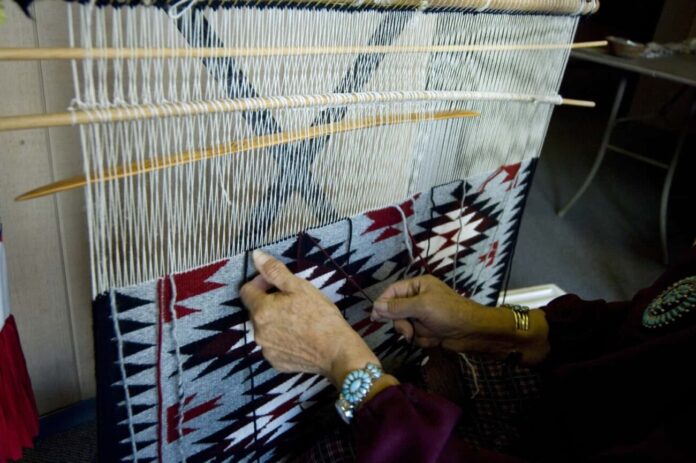
Cleaning Techniques for Navajo Rugs: Do’s and Don’ts
Proper cleaning is essential for preserving the beauty and longevity of your Navajo rugs. However, it’s important to follow the right techniques to avoid damaging the fragile fibers.
Do not use harsh chemicals or bleach on your Navajo rug, as they can strip away natural dyes and weaken the fibers. Instead, gently vacuum the rug using a soft brush attachment and spot clean any stains with mild detergent and water.
Preventing Damage: Best Practices for Storing Navajo Rugs
When not in use, it’s crucial to store your Navajo rugs properly to prevent damage and deterioration. Avoid storing them in damp areas or places prone to insect infestations, as these can lead to mold and pest damage.
Roll your Navajo rugs with acid-free tissue paper to prevent creasing and place them in a plastic storage tube or acid-free box. Store them in a cool, dry area away from direct sunlight and humidity.
Professional Conservation and Restoration Services for Navajo Rugs
If your Navajo rug requires extensive repairs or conservation work, it’s best to seek the assistance of professional rug conservators and restorers. These experts have the knowledge and skills to repair tears, stabilize weak areas, and restore the rug to its original beauty.
Before entrusting your rug to a conservator, be sure to do your research and choose a reputable professional who specializes in Navajo rug conservation.
By following these care and preservation guidelines, you can ensure that your Navajo rug collection remains vibrant and beautiful for years to come.
FAQ
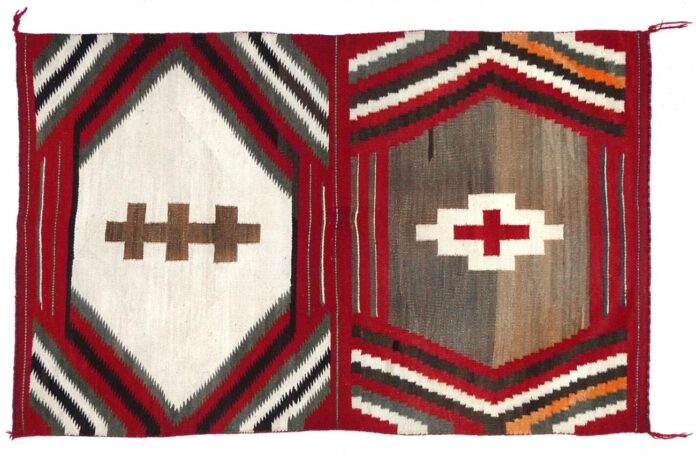
Are Navajo rugs only used for decorative purposes?
Navajo rugs have a long history as utilitarian items, serving as floor coverings, saddle blankets, and clothing. While they are now highly valued as works of art, they can still be used for their original purposes.
How can I determine the authenticity of a Navajo rug?
Look for evenness in the weaving, tightness of the stitches, and consistency in the design. Authentic Navajo rugs are typically made with hand-spun wool and natural dyes. It is also important to consider the reputation and credentials of the seller.
Where can I find authentic Navajo rugs for sale?
Authentic Navajo rugs can be found at Navajo rug trading posts, online marketplaces, and specialized galleries. These establishments often have a wide selection of rugs, both antique and contemporary.
What types of designs and patterns are common in Navajo rugs?
Navajo rug designs are rich in symbolism and meaning, often reflecting the natural world and elements of Navajo mythology. Some common designs include the “Eye Dazzler,” the “Double Storm Pattern,” and the “Yei-Bi-Chei.”
How can I care for my Navajo rugs?
Gently vacuum the rug using a soft brush attachment and spot clean any stains with mild detergent and water. Avoid using harsh chemicals or bleach. When not in use, store your rugs in a cool, dry area away from direct sunlight and humidity.
Can damaged Navajo rugs be repaired?
If your Navajo rug requires extensive repairs or conservation work, it is best to seek the assistance of professional rug conservators and restorers. These experts have the knowledge and skills to repair tears, stabilize weak areas, and restore the rug to its original beauty.
How can I determine the fair market value of a Navajo rug?
The price of Navajo rugs can vary significantly depending on factors such as size, age, condition, and the reputation of the weaver. Research similar rugs and their prices, consult with experts in the field, and consider getting appraisals if purchasing a high-value rug.
Are Navajo rugs only made using traditional techniques?
Navajo rug weaving techniques have evolved over time, with some weavers using traditional hand-spun wool and natural dyes, while others incorporate commercial yarns and synthetic dyes for a wider range of colors and textures.

